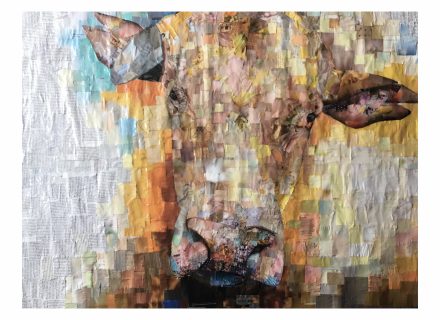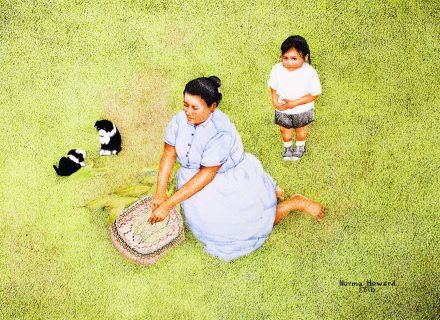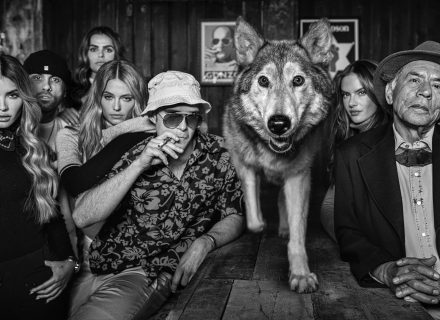Bringing a contemporary twist to traditional Cherokee symbolism is just one of the many skills of artist, curator, educator, and thinker America Meredith.
Known for her pop-culture, flat-style approach to painting Cherokee portraits, syllabary, and medicinal formulae, America Meredith is widely regarded as a prominent artist, curator, and educator. She’s also a significant thinker and the editor of First American Art Magazine. She’s pointed out that humans have laws, but birds and animals have natural laws too that humans must answer to. That Native people have knowledge about how to live on this planet, and Native art is a way to envision this and inspire it. Certainly her own art does so. “It’s for navigating my reality,” she says. “In this era we feel in between forces and fractured, and to me my art is always hopeful and optimistic. It’s always thinking about how the Earth will always find a way. Nature will find a way.”
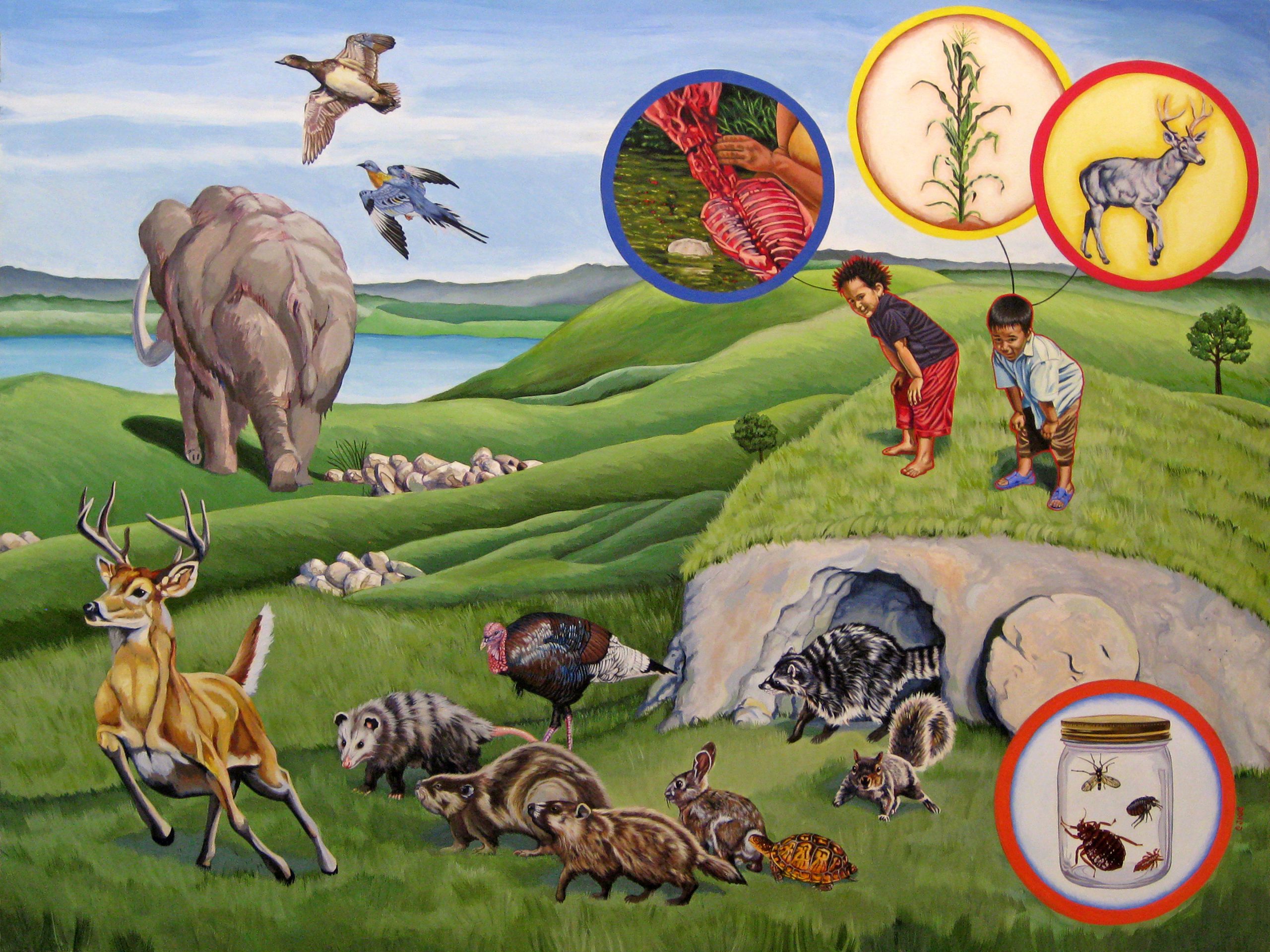 The Thunder Boys Release Game into the World; 2011; acrylic, colored pencil, watercolor, 1-Shot enamel on panel; 30" x 40".
The Thunder Boys Release Game into the World; 2011; acrylic, colored pencil, watercolor, 1-Shot enamel on panel; 30" x 40".
An enrolled member of the Cherokee Nation, Meredith was born in New York City in 1972 to a professor father of Cherokee descent and Cherokee Native citizen museum curator mother. “My dad always said, you’re going to be an artist. He taught me how to sign my name in syllabary when I was 5 or 6,” she remembers. She’s spent much of her life in Oklahoma but spent the ’90s and ’00s in San Francisco, where she earned her MFA in painting from San Francisco Art Institute and worked as a bike messenger. “I remember being in San Francisco and the Zuni tribe had a cooperative on Union Square. I went there and saw the most beautiful turquoise jewelry and I thought, I need to go home,” says Meredith, who has also taught at the Institute of American Indian Arts in Santa Fe.
Currently based in Norman outside of Oklahoma City, Meredith uses Cherokee aesthetics as a force for cultural continuance, with particular emphasis on the environment and history. “I am really interested in iconography and symbolism and metaphor and that in-between of writing and visual images. So there’s a lot of writing in my art. It’s about the aesthetics of writing, and it’s also a lot about how images and portraits can be read — so, like, different symbolism in different colors. Every tribe has this, but Cherokees have certain colors that correspond to certain directions and moods and feelings,” she says. “Black is the west and defeat and death. Red is the east, and it’s victory. White is the south and peace. Blue is the north and sorrow. Yellow is a priestly color.”
Her art arrives full of meaning. Daughter of the Sun, depicting a red cardinal perched in front of building entry passes during her bike-messenger days, is part of a series called Natural Law and a commentary about who can go where. It’s rooted in Cherokee beliefs. “We conceptualize the sun as a woman. The cardinal is her daughter. The cardinal dies and goes to the underworld. The sun is heartbroken and scorching the earth. So all these other animals go to the underworld to bring the cardinal back. Finally, the compromise is made that the sun will only heat up the earth half the time,” Meredith explains.
Good Luck, with its fish thermometer, polar bear on a melting ice floe, and ironic good luck horseshoe, speaks of climate disruption. “The story’s not over yet. It’s not a done deal yet. That’s the takeaway I hope people get. It’s not all doom and gloom. We still have choices we can make,” she says.
The 17th-century Native woman who became Saint Kateri is shown in Extremis Malis Extrema Remedia (Extreme Remedies for Extreme Ills). “It’s a Latin term, desperate times call for desperate measures,” Meredith says. “This is a historic woman who really lived. She got smallpox and survived it.”
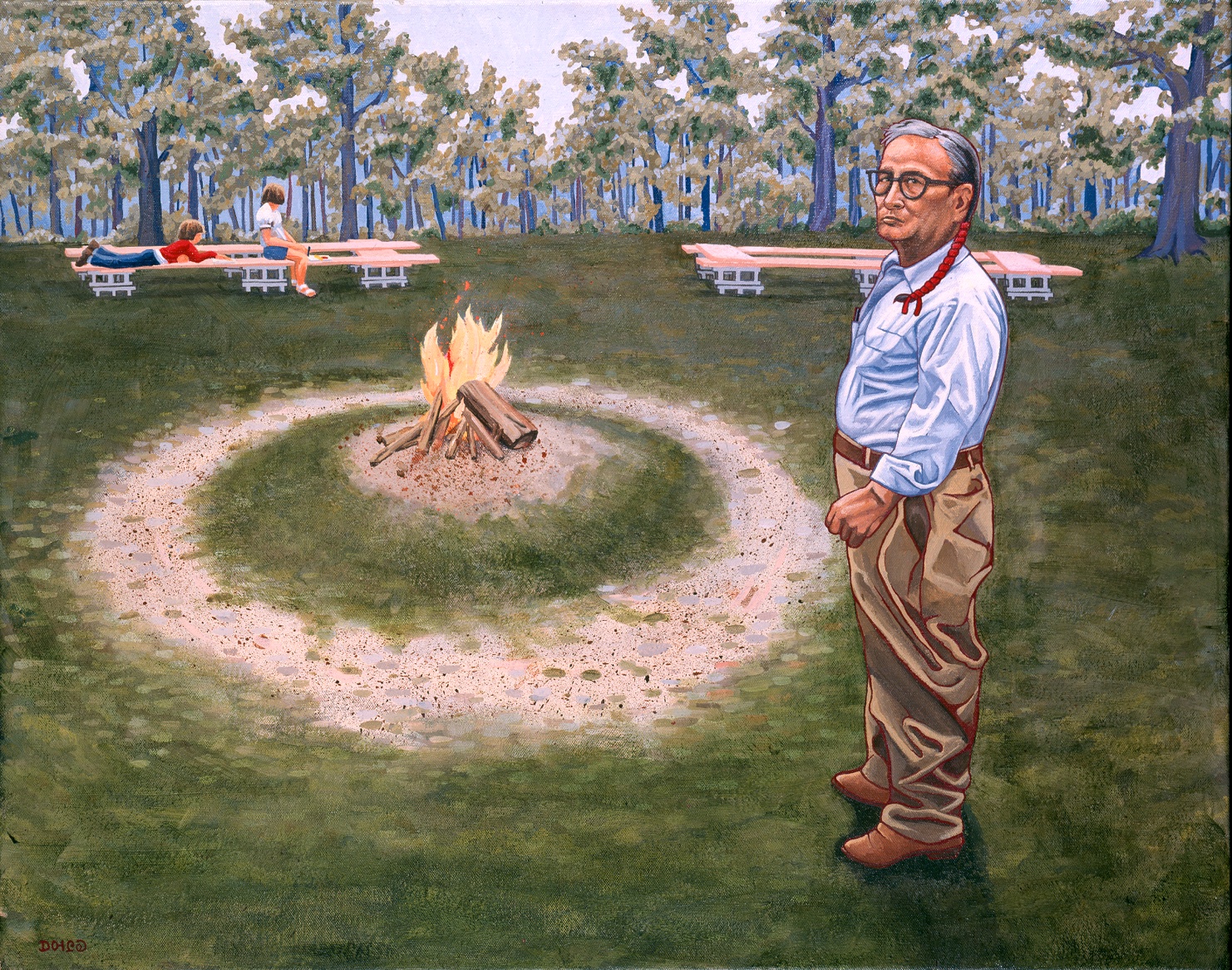 Samonia, Me, and Archie Sam, 2005, acrylic on canvas, 24 x 30 in.
Samonia, Me, and Archie Sam, 2005, acrylic on canvas, 24 x 30 in.
An osprey and a kingfisher swoop down while hunting fish in Datsetla Asudi (Better Fishing). “They have a red outline, so they’re victorious over the fish. The purple is a medicinal or magical color around the text — it says, ‘Better fishing,’” Meredith says. “It’s an incantation to improve fishing. We’re all part of a linked network. The person calling the incantation is calling on the birds for their keen fishing abilities.” With its many animals, Thunder Boys tells a creation story. “It’s hero twins releasing game into the wild. It’s an archetypal Cherokee story.”
Alexander Posey is a portrait of the real-life Muscogee Creek journalist who was influential in the early 1900s. “He used humor in writing as his weapon. He’s got his quill,” Meredith points out. A portrait entitled Guque Atanutsa (Quail Girl) was inspired by a historic painting. “She’s a 19th-century Cherokee woman, wearing elegant jewelry and flashy clothing from her day. Many Native women dressed in clothing of their times, but seldom were portrayed that way.”
The popular Cherokee performer-social commentator Will Rogers is shown with a trickster rabbit in Will Rogers the Jisdu — the jisdu being the rabbit. “He was the best-paid entertainer during the Great Depression,” Meredith says. “He was an agent of change.” He was also her great-great-uncle.
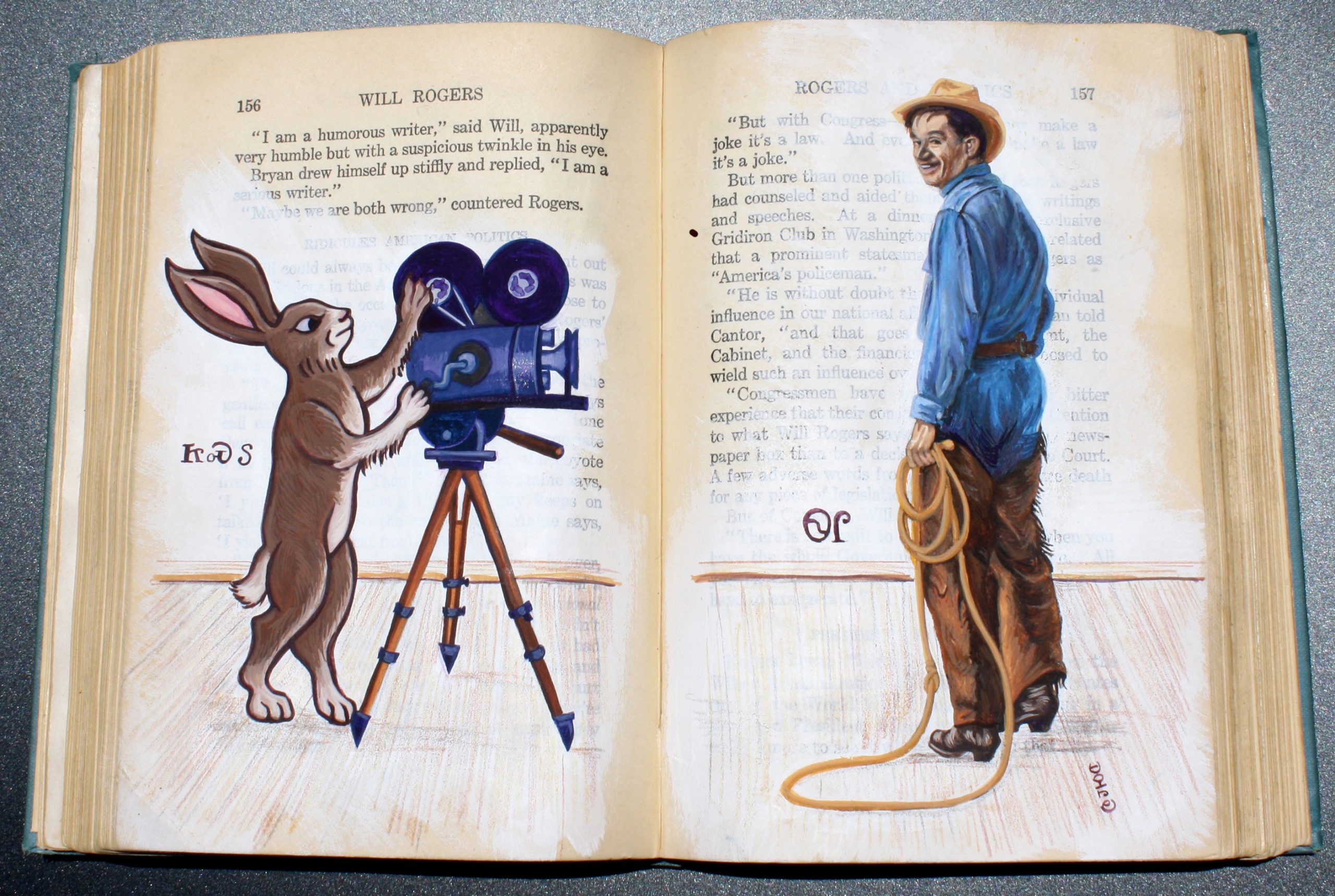 Will Rogers the Jisdu, 2016, gouache and pencil on antique book, 8.25" x 12" x .75".
Will Rogers the Jisdu, 2016, gouache and pencil on antique book, 8.25" x 12" x .75".
The nostalgic Samonia, Me, and Archie Sam reaches back to Meredith’s childhood when Archie Sam encouraged people to stomp dance. “These stomp dances are usually deep in the woods because this practice was outlawed until 1978,” she says. “Archie Sam is an honest-to-God medicine man. That’s myself and my sister in the background.”
In focusing on Native issues, Meredith is often proposing a collective cultural ability to heal our planet. “I think within our cultures and within our languages, there’s incredible knowledge of the land. We talk about us being post-apocalyptic people who’ve already gone through the cataclysms, which I think is true,” she says. “[Native] people knew how to deeply pay attention to and work with the plants, the fungus, the soil, all that. I think that deep cultural knowledge and connection with other species is not a fantasy.”
America Meredith is represented by Spider Gallery in Tahlequah, Oklahoma. Visit the artist online at ahalenia.com.
Lead Image: Good Luck, 2012, acrylic on panel, 18" x 24".
This article appears in our July 2023 issue, available now on newsstands and through our C&I Shop.
















